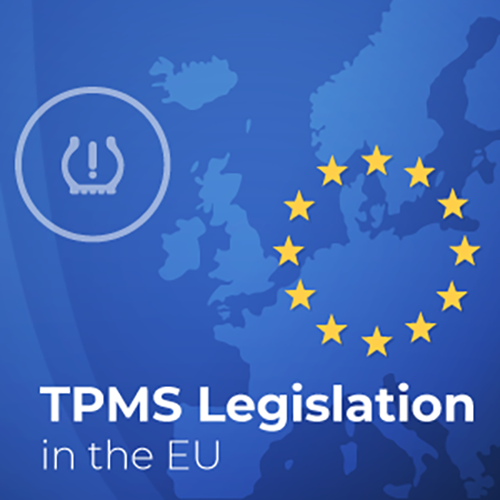 Tyre pressure monitoring systems (TPMS) are an important vehicle safety feature legislated in many countries around the world. Since its initial adoption in 2008 in the United States (TREAD Act) the legislation quickly spread in different countries including the EU member states, South Korea, and Japan.
Tyre pressure monitoring systems (TPMS) are an important vehicle safety feature legislated in many countries around the world. Since its initial adoption in 2008 in the United States (TREAD Act) the legislation quickly spread in different countries including the EU member states, South Korea, and Japan.
In the EU TPMS became mandatory for all class M1 vehicles (vehicles designed and constructed for the carriage of passengers and comprising no more than eight seats in addition to the driver's seat) registered after November 1st, 2014. The initial legislation was approved in 2009 in Brussels (UN ECE R64) with the aim to optimize fuel consumption and increase driver safety, which are the two most well-known benefits of the TPM systems.
The introduction of the legislation in the EU happened with a two-year phase-in schedule starting from November 1st, 2012. All vehicles type-approved after this date were equipped with a TPM System. Furthermore, all newly registered vehicles after November 1st, 2014 had a TPM System.
The initial legislation was covering only passenger (M1 type) vehicles, and with TPMS proving its environmental, safety, and economic impact, in 2019 the legislators in Brussels made an important decision to implement the 2017 update of the UN ECE regulation, now known as UN ECE R141. The updated legislation extends mandatory TPMS fitment beyond category M1 (up to 3,500 kg) to include N1 type vehicles that are designed and constructed for the carriage of goods and having a maximum mass not exceeding 3.5 tonnes. TPMS fitment for further categories including M2, M3, N2, N3, O3 & O4 will also become mandatory. There are discussions about splitting the UN ECE R141 regulation into two based on vehicle types, however, this has not happened yet.
The legislation change was a result of the revised general safety regulation document, introduced in 2019 aiming to improve safety on the EU roads. Together with TPMS, the updated document affects other road safety features such as ADAS, pedestrian, and passenger safety systems, braking, lighting, steering, etc.
The revised TPMS legislation is planned to come into force with a two year phase-in period: from July 2022 TPMS will be mandatory for all new M1 vehicles & all new type approvals for M2, M3, N1, N2, N3, O3, O4 vehicle categories. Later on, in 2024 working TPM system will be mandatory for all new registrations for the following vehicle categories: M1, M2, M3, N1, N2, N3, O3, O4. However, slight adjustments in the introduction dates are possible due to further developments of the COVID-19 outbreak.
Schrader as the leading manufacturer of direct TPMS welcomes the updated legislation. We believe that these changes will positively impact road safety in the European Union, as N1 type vehicles were quite a big risk group for accidents. Schrader and its parent company Sensata Technologies are fully compliant with the upcoming legislation both on the aftermarket and OE sides.
Sources:
- https://ec.europa.eu/commission/presscorner/detail/en/IP_19_1793
- https://www.unece.org/fileadmin/DAM/trans/main/wp29/wp29regs/2017/R141e.pdf
- https://www.vehicle-certification-agency.gov.uk/vehicletype/definition-of-vehicle-categories.asp#:~:text=Category%20N1%3A%20Vehicles%20designed%20and,but%20not%20exceeding%2012%20tonnes.
- https://eur-lex.europa.eu/legal-content/EN/TXT/PDF/?uri=OJ:L:2019:325:FULL&from=EN
Written by Mariam Lochoshvili Marketing & Communications Manager
